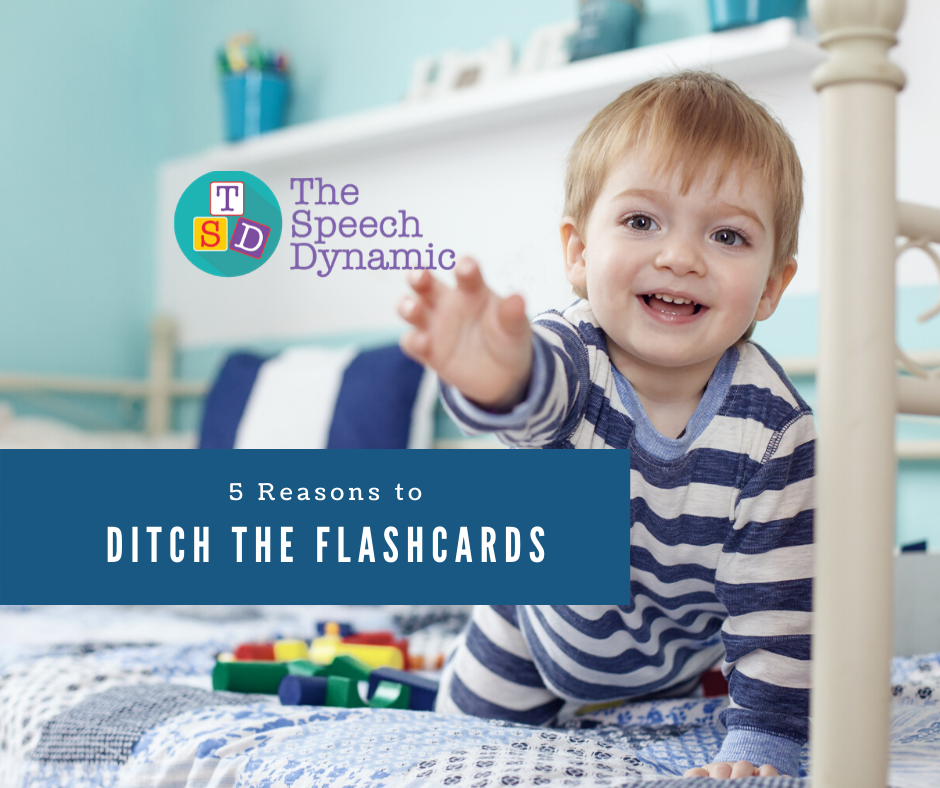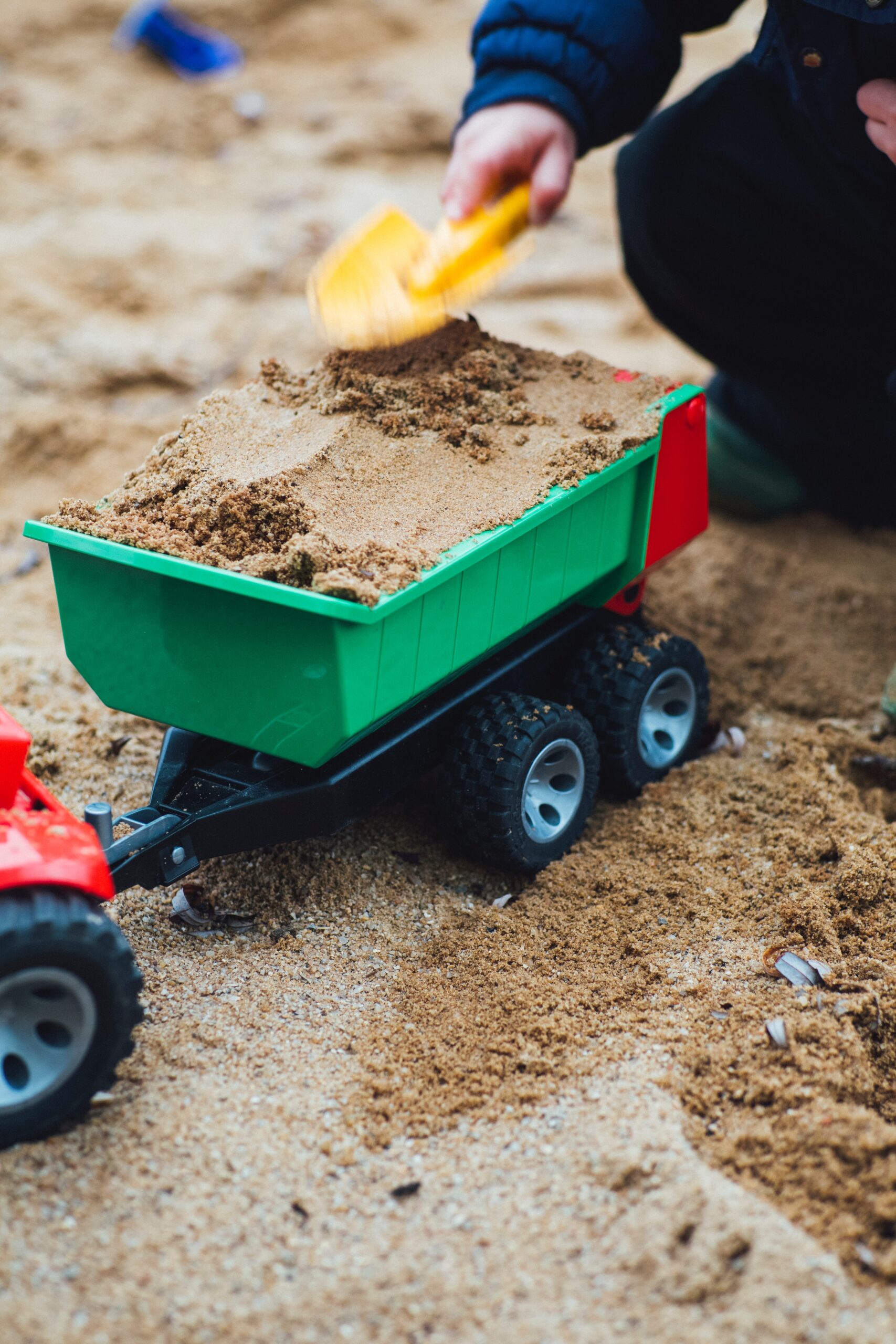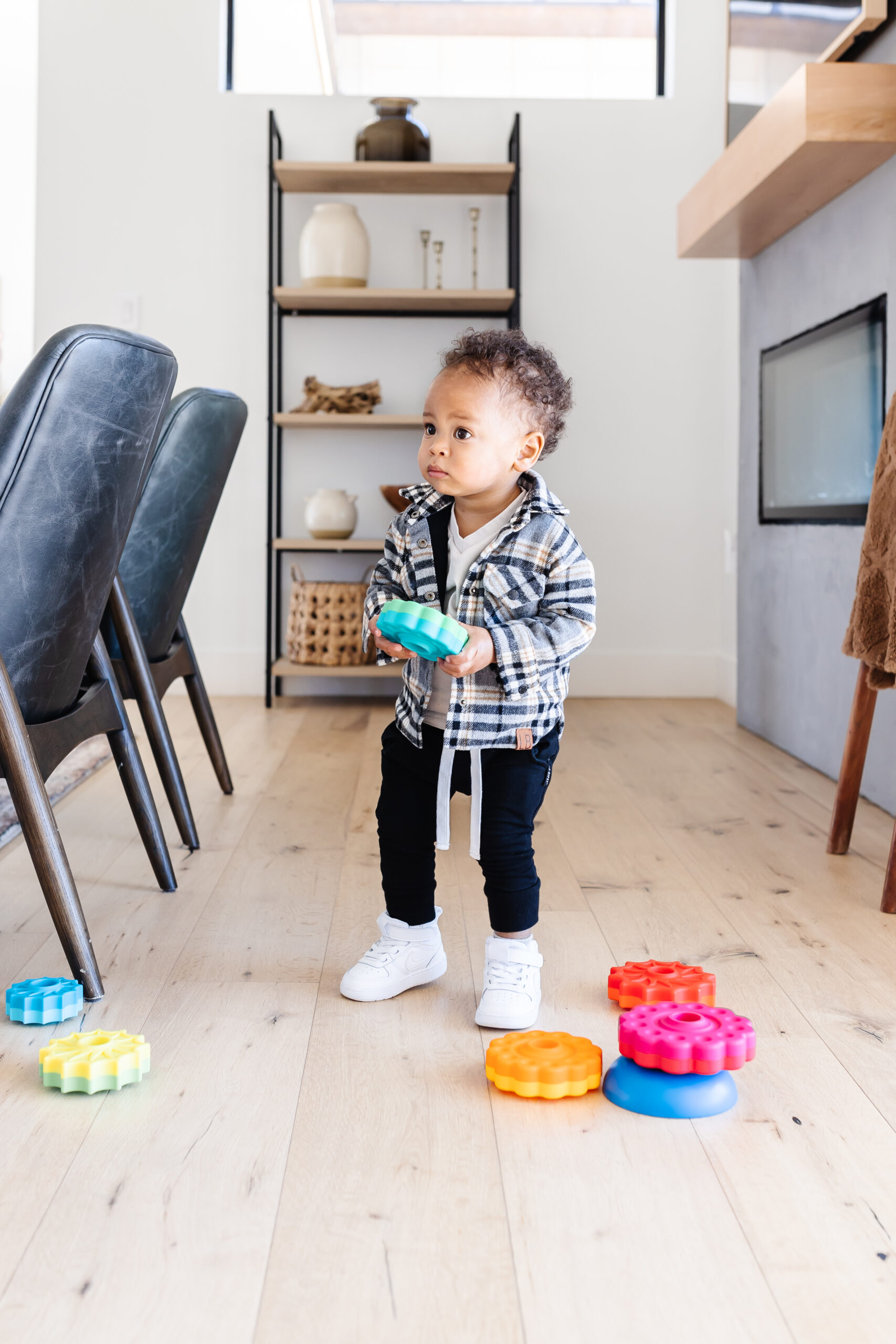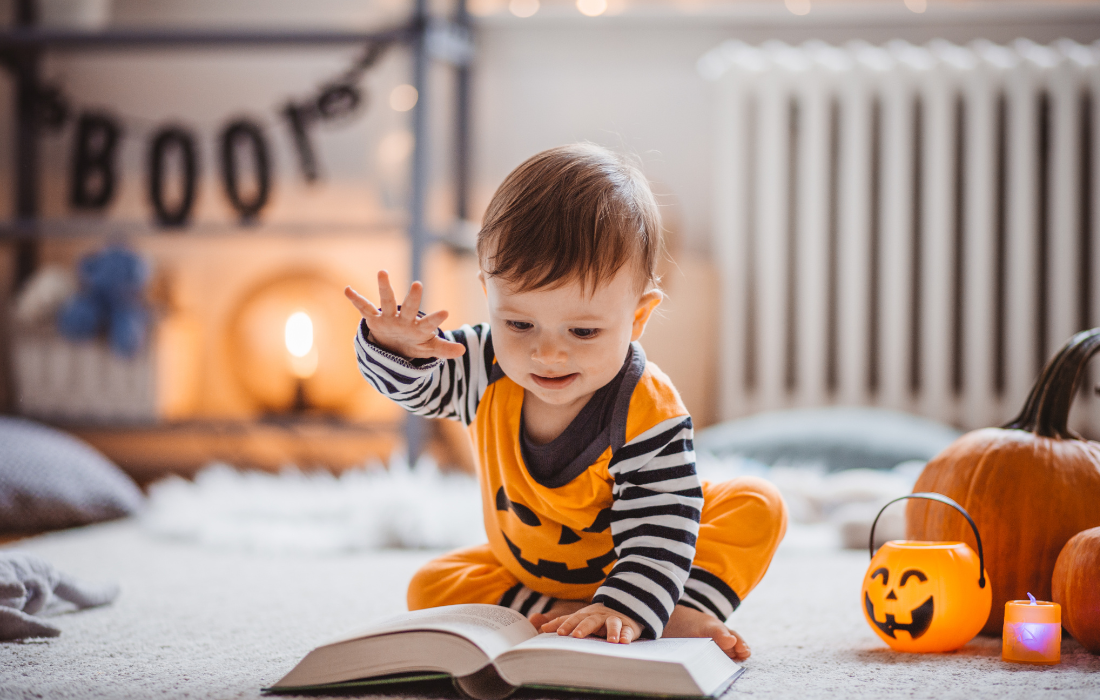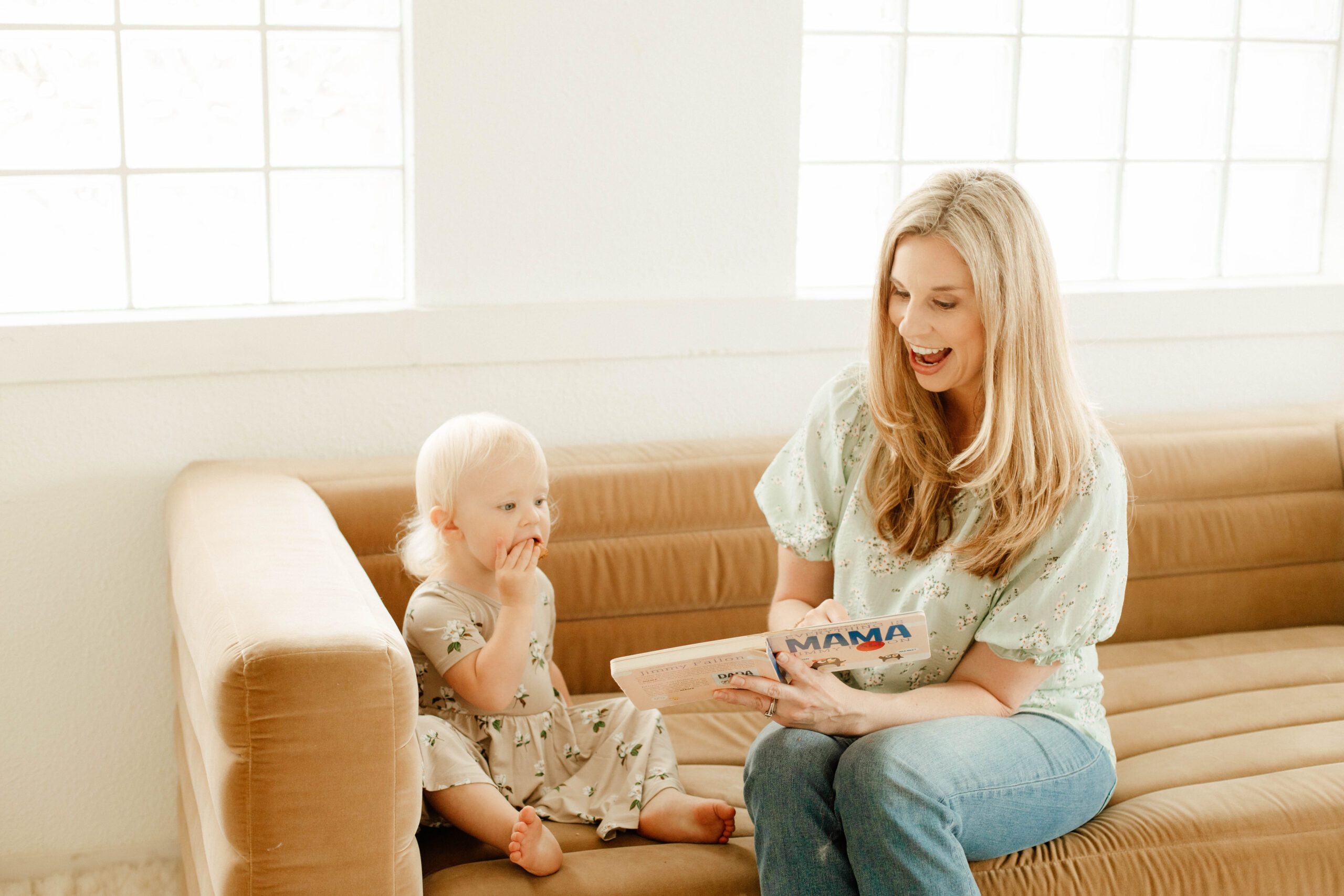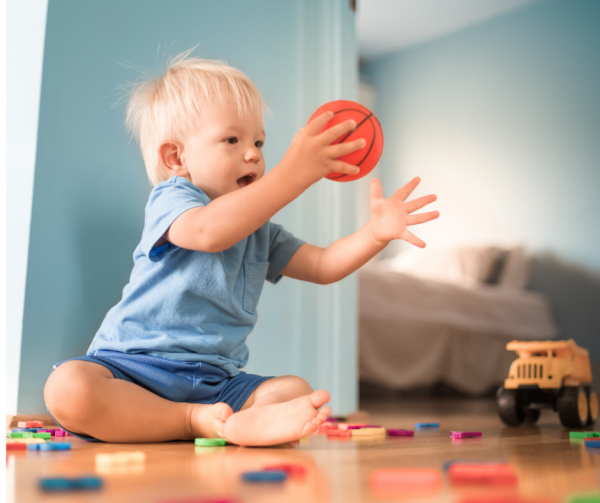
Labeling is only one aspect of language: Labeling pictures is great, but there are so many other reasons we use language! These include requesting, commenting, asking questions, answering questions, and sharing our ideas. Flashcards tend to only work on the skill of labeling.
Communication is an interaction: Communication is a two-way street that involves listening to another person and then changing your response accordingly. The format of an adult holding a picture and a toddler saying it is more of a call and response than back and forth communication.
Flashcards tend to be nouns: In a study by Hadley, Rispoli, and Hsu (2015). The researchers found that the number of verbs in children’s vocabularies were better predictors than the number of nouns for later language development. There was a relationship between the types of verbs and the number of words children were putting together when measured three months later (read more about verbs here). Word types such as verbs and adjectives give toddlers the “building blocks” to start putting words together and forming combinations.
Language is the most salient when it’s meaningful: Just like anything else, learning is most effective when it takes place in a meaningful context. A toddler is much more likely to learn the word “duck” when feeding ducks at the pond vs. seeing a duck on a flashcard.
We want to teach, not quiz: The main issue with flashcards is that they become a quiz instead of a language learning opportunity. Adults fall into the trap of continuously asking, “What’s that” instead of exposing toddlers to new language associated with the picture.
It’s not that flashcards are inherently bad. In fact, I love these Touch and Feel cards from DK Learning. It’s about the way they are used. I love to use these cards to talk about how they feel “bumpy” or “scratchy.” In speech therapy sessions, I comment on the pictures to expose toddlers to new language and sentence structures (“That truck has huge wheels!”) Books (such as this one) are great for this too!
Make sure to balance your questions with comments. If you find yourself asking, “What’s that?” over and over, you are probably quizzing. Language is in everything we do. It’s in taking a walk, making lunch, and simply being together. Next time you pull out those flashcards, ask yourself if there is a more enjoyable way to spend time together while also simultaneously growing your toddler’s language skills.
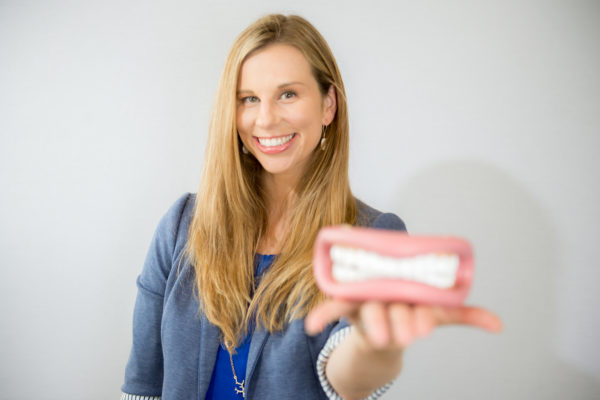 Brooke Andrews, M.A. CCC-SLP/COM is owner of The Speech Dynamic and specializes in providing speech, language, and feeding therapy in Houston, TX. Her clinical expertise include early intervention, myofunctional therapy, and apraxia of speech.
Brooke Andrews, M.A. CCC-SLP/COM is owner of The Speech Dynamic and specializes in providing speech, language, and feeding therapy in Houston, TX. Her clinical expertise include early intervention, myofunctional therapy, and apraxia of speech.
It’s not that flashcards are inherently bad. In fact, I love these Touch and Feel cards from DK Learning. It’s about the way they are used. I love to use these cards to talk about how they feel “bumpy” or “scratchy.” In speech therapy sessions, I comment on the pictures to expose toddlers new language and sentence structures (“That truck has huge wheels!”) Books (such as this one) are great for this too!
Make sure to balance your questions with comments. If you find yourself asking, “What’s that?” over and over, you are probably quizzing. Language is in everything we do. It’s in taking a walk, making cookies, and simply being together. Next time you pull out those flashcards, ask yourself if there is a more enjoyable way to spend time together while also simultaneously growing your toddler’s language skills.
 Brooke Andrews, M.A. CCC-SLP/ COM is owner of The Speech Dynamic and specializes in providing speech, language, and feeding therapy in Houston, TX. Her clinical expertise include early intervention, myofunctional therapy, and apraxia of speech.
Brooke Andrews, M.A. CCC-SLP/ COM is owner of The Speech Dynamic and specializes in providing speech, language, and feeding therapy in Houston, TX. Her clinical expertise include early intervention, myofunctional therapy, and apraxia of speech.
